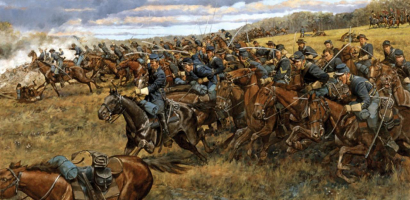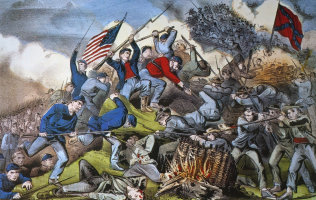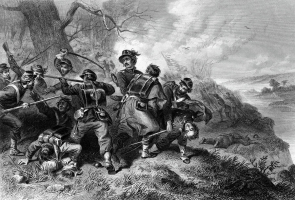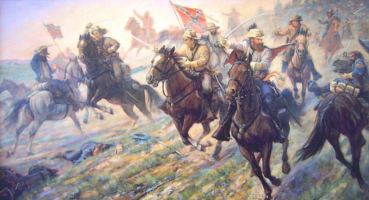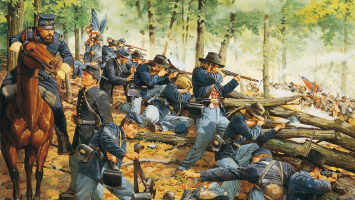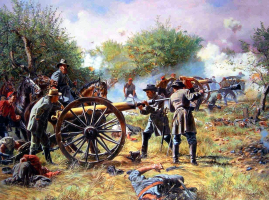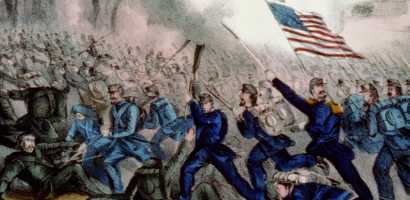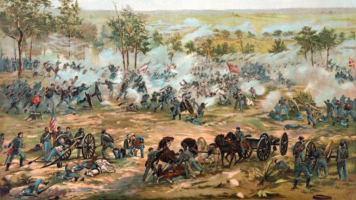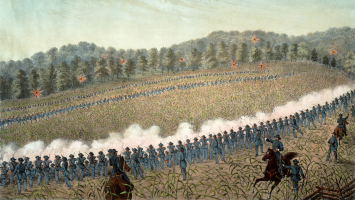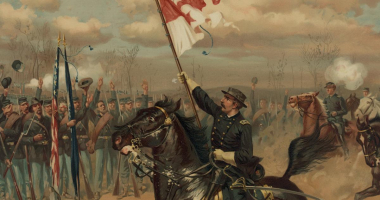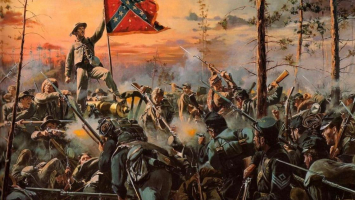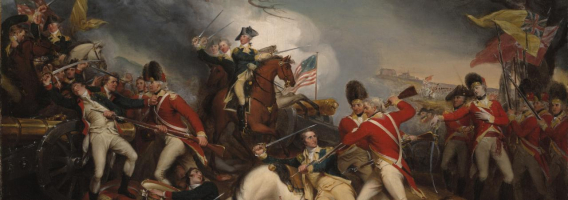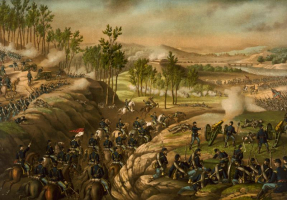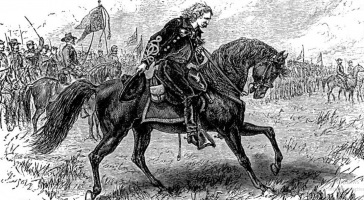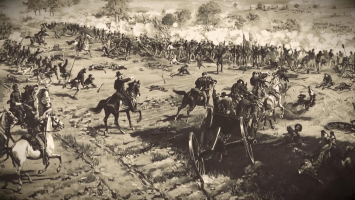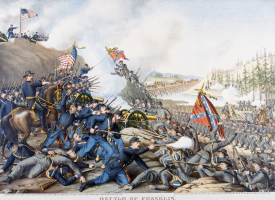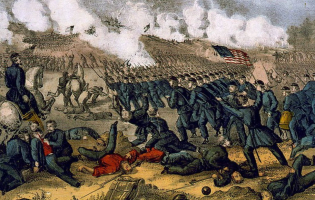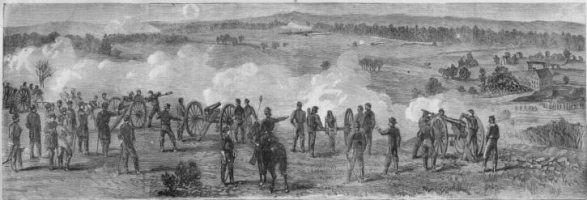Top 12 Facts About The Battle of Camden
The Battle of Camden was a major victory for the British in the American Revolutionary War. In this list, we'll give you 12 facts about this battle that you ... read more...might not know of.
-
The Southern theater of the American Revolutionary War was the central theater of military operations in the second half of the American Revolutionary War, 1778–1781. It encompassed engagements primarily in Virginia, Georgia, and South Carolina. During the first three years of the conflict, 1775–1778, the largest military encounters between Continental Army and the British Army had been in the New England and Middle colonies, around the cities of Boston, New York, and Philadelphia. After the failure of the Saratoga campaign, the British Army largely abandoned operations in the north and pursued peace through subjugation in the Southern Colonies.
The British began to implement their "Southern Strategy" in late 1778, in Georgia. It initially achieved success with the capture of Savannah, Georgia, which was followed in 1780 by operations in South Carolina that included the defeat of Continental forces at Charleston and Camden. The Battle of Camden (August 16, 1780), also known as the Battle of Camden Court House, was a major victory for the British in the Southern theater of the American Revolutionary War. This battle was considered the high tide for the British in the American Civil War. Because even though the British Army was outnumbered by the American Army, they were able to capture one of the most important areas of the South without having too many casualties, and move a step further in The Southern theater (The Southern Campaign), take more control in the American Civil War against the American Army.
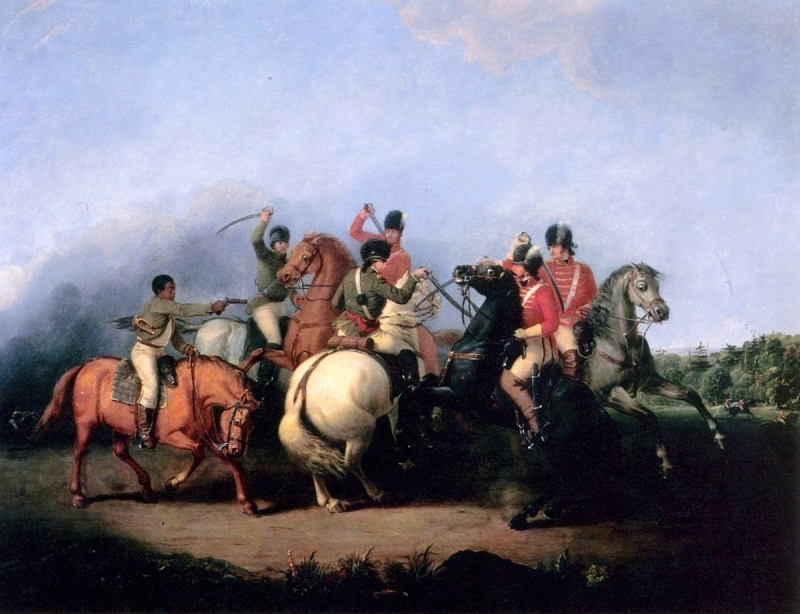
Battle in the Southern Campaign - Wikipedia 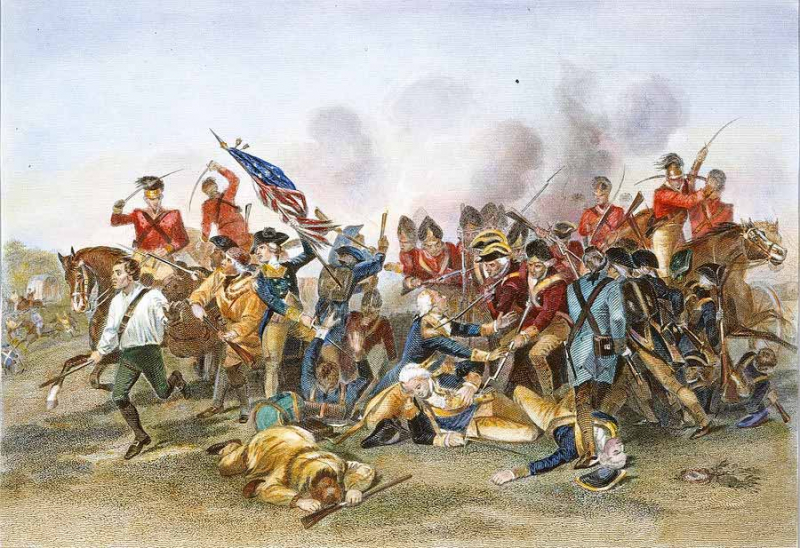
The Battle of Camden - Wikipedia -
The Battle of Camden in South Carolina was a lopsided victory for the British during the American Revolutionary War. However, one of the stand-out factors of the battle was the number of soldiers that the two armies had. The British army comprised 1,500 hundred regular troops and 500 militia, consisted of about 2,200 Soldiers, and was commanded by Lt. Continental General Charles Cornwallis. On the other hand, The American army comprised 1,500 Continental troops and 1,500 militia, consisted of about 3,700 Soldiers, and was commanded by Maj. General Horatio Gates.
Despite the proliferation of dysentery among his men, Continental General Horatio Gates chose to engage British General Charles Cornwallis’s force on the morning of August 16, 1780 and started the Battle of Camden. Despite the difference in the number of soldiers, the illness depleted the Patriot advantage in troop numbers, and the British pressed forward aggressively as the sole side in possession of bayonets. The encounter resulted in nearly 2,000 Patriots killed or taken prisoner and heavy losses of artillery.
After the disastrous loss at Camden, Gates was removed from command and replaced by Nathanael Greene (1742-86). A second clash at Camden, the Battle of Hobkirk’s Hill, took place on April 25, 1781. Although a technical victory for the British, they abandoned Camden the following month.
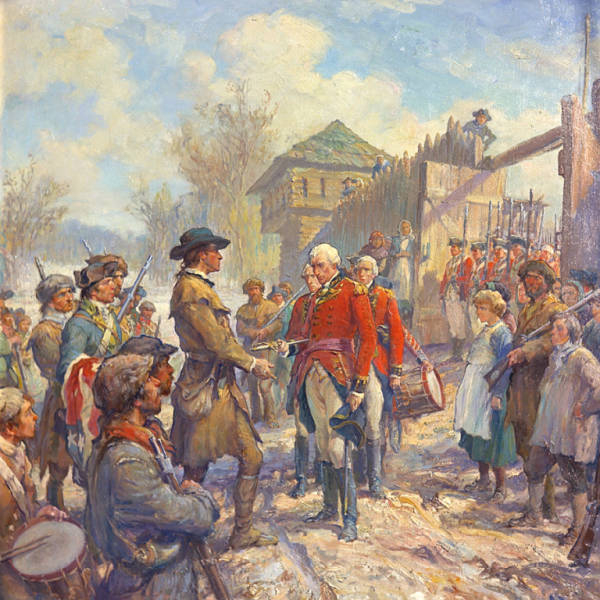
British Forces took over American Forces' land - Wikipedia 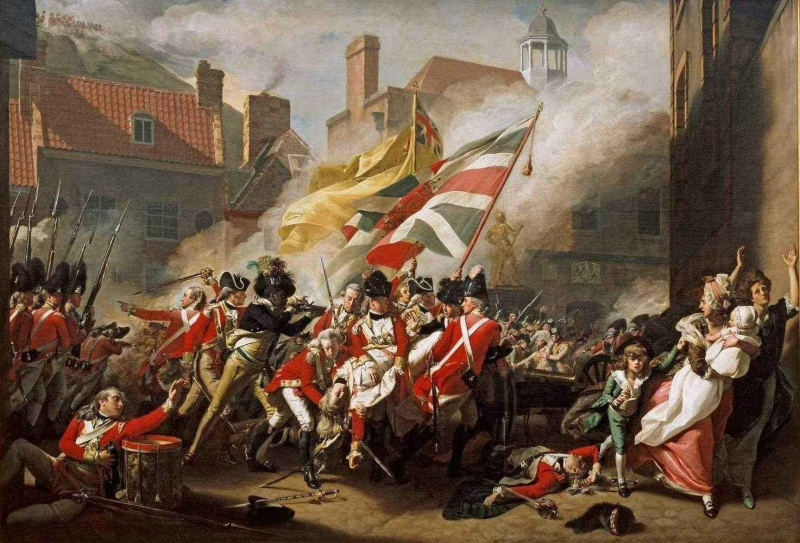
Photo: History Discussion -
On July 27, 1780, General Horatio Gates ordered his new “Grand Army” south from Deep Creek, North Carolina towards Camden, South Carolina to participate in the Battle of Camden. Against the advice of many of his subordinates, Gates chose a direct route to Camden through the barren countryside. The American army was already lacking food and supplies, but Gates was worried that if he did not move on this route of approach, he would fail to link up with the North Carolina militia that was assembled in northern South Carolina. Colonel Otho Holland Williams wrote that the route "was by nature barren, abounding with sandy plains, intersected by swamps, and very thinly inhabited."
On August 15th, Gates ordered rations of meat, bread, and molasses for his men (molasses being a substitute for rum, of which Gates had little). Williams wrote later “The troops of general Gates’ army, had frequently felt the bad consequences of eating bad provisions; but, at this time, a hasty meal of quick baked bread and fresh beef, with a dessert of molasses, mixed with mush, or dumplings, operated so cathartically, as to disorder very many of the men, who were breaking the ranks all night, and were certainly much debilitated before the action commenced in the morning. From a mixture of bad bread, undercooked meat, and the molasses, many of the Americans fell out sick on the night march towards Camden and others went into battle the next morning sick to their stomachs."
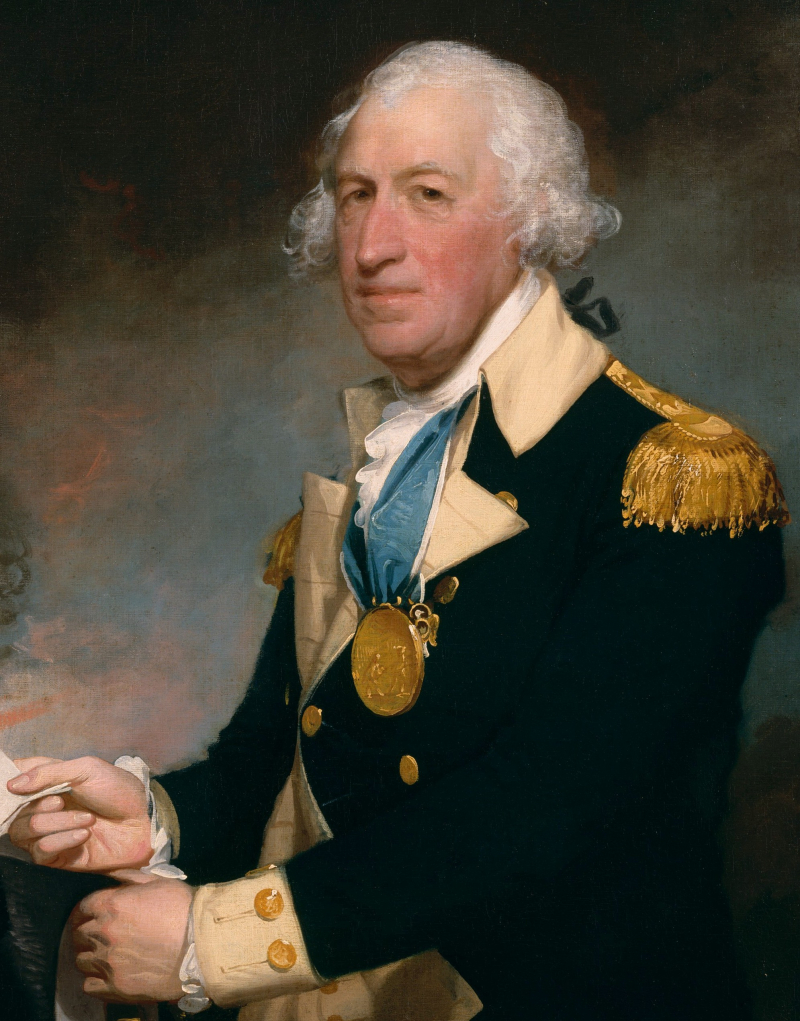
Horatio Gates - Wikipedia 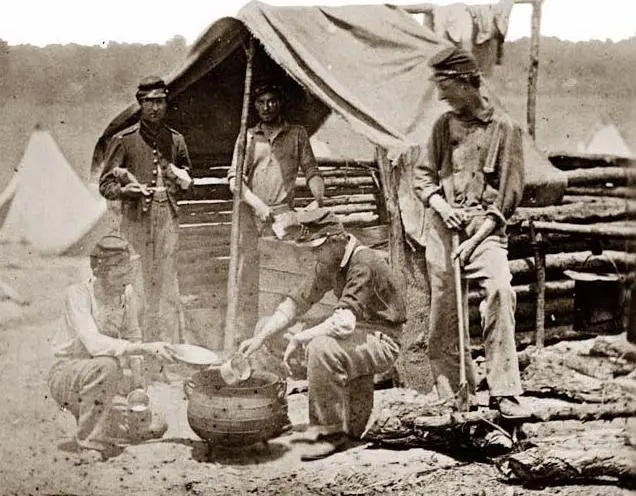
Photo: Emerging Civil War -
While the American Army's condition is well-documented, the condition of the British Army is overlooked during the Battle of Camden. The outpost at Camden was not a healthy place in 1780. Lord Rawdon, commanding the forces at Camden, had a force of about 1,000 men, many of whom were sick and undermanned, therefore unfit for duty. With the arrival of General Horatio Gates and his movement south from North Carolina, General Lord Cornwallis ordered other British outposts to send forces to Camden. Cornwallis himself arrived to take personal command on August 13th. Of the nearly 3,500 men on the rolls, only around 2,300 men were fit for duty on the evening of August 15th when the army began its march north.
Cornwallis believed that he could not defend Camden with the men he had. Therefore, he began to think about other ways to manage his forces against the American forces further in the Battle of Camden. By moving to confront Gates he was hoping to catch him off guard and give himself a chance to move the sick out of the town before the Americans arrived. Cornwallis knew he was outnumbered, but he hoped the element of surprise and his experienced troops would give him the upper hand.
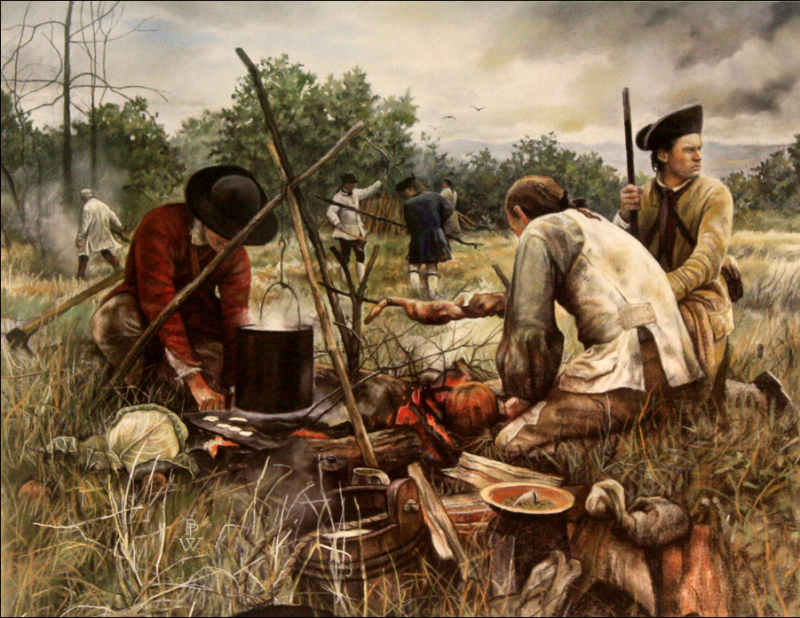
Photo: allthingsliberty.com 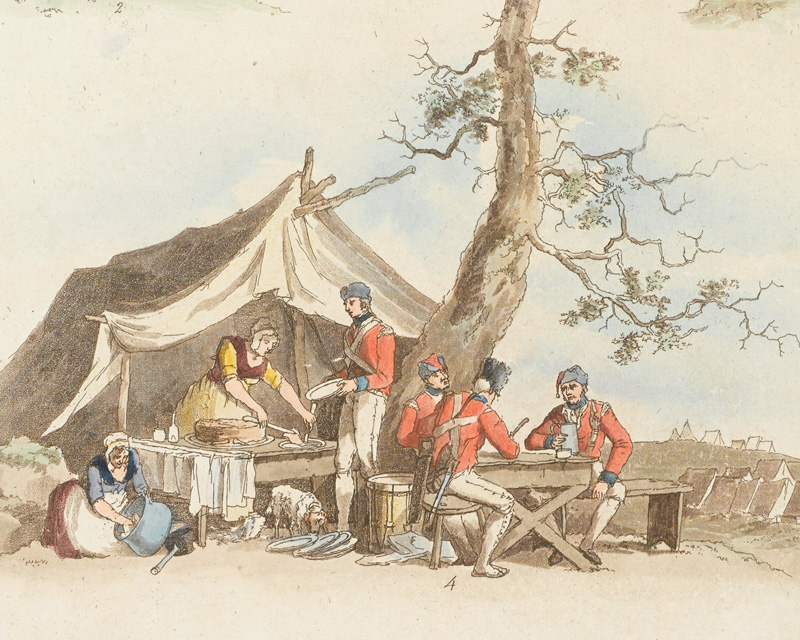
Photo: www.nam.ac.uk -
Horatio Lloyd Gates (July 26, 1727 – April 10, 1806) was a British-born American army officer who served as a general in the Continental Army during the early years of the Revolutionary War. Gates has been described as "one of the Revolution's most controversial military figures" because of his role in the Conway Cabal. He was assigned to lead the new southern army, despite not being picked by George Washington. However, he also took the blamed for the defeat at the Battle of Camden.
With the surrender of the Continental Army under Major General Benjamin Lincoln in Charleston, SC on May 12, 1780, the Americans lost 4,000 men underarms. George Washington, who had already sent Continental forces under Major General Johann de Kalb to assist Charleston, wanted to send his trusted subordinate, Nathaniel Greene, to reconstitute a new southern army with de Kalb’s men as a nucleus. Unfortunately, the politics of the Continental Congress led to the appointment of Horatio Gates. Divisions in the Continental Congress led to Washington and Gates factions, with many believing Gates’ victories at Saratoga gave him the right to replace Washington. When Charleston fell, Gates lobbied hard to lead the new southern army without having to report to Washington. Washington, always attentive to civilian control of the military, differed with Congress’ decision to give Gates the command in the south.
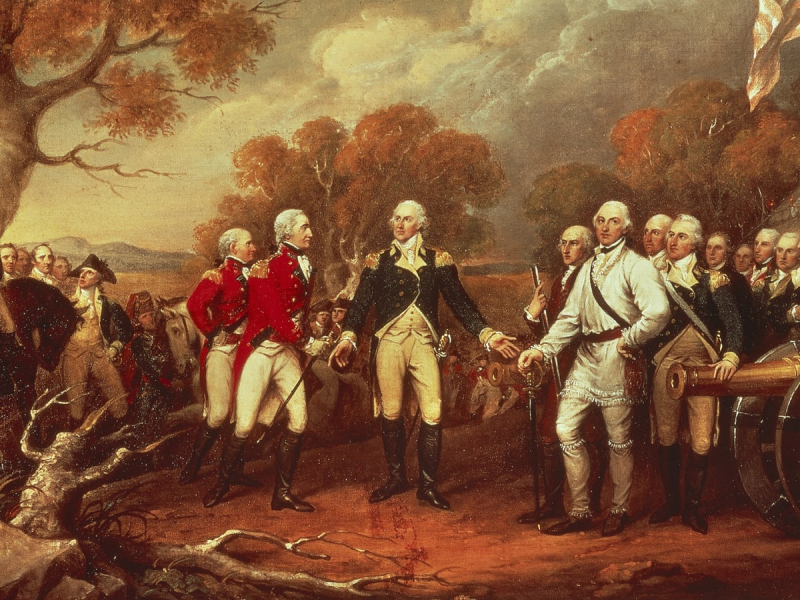
General Horatio Gates on the battlefield - www.history.com 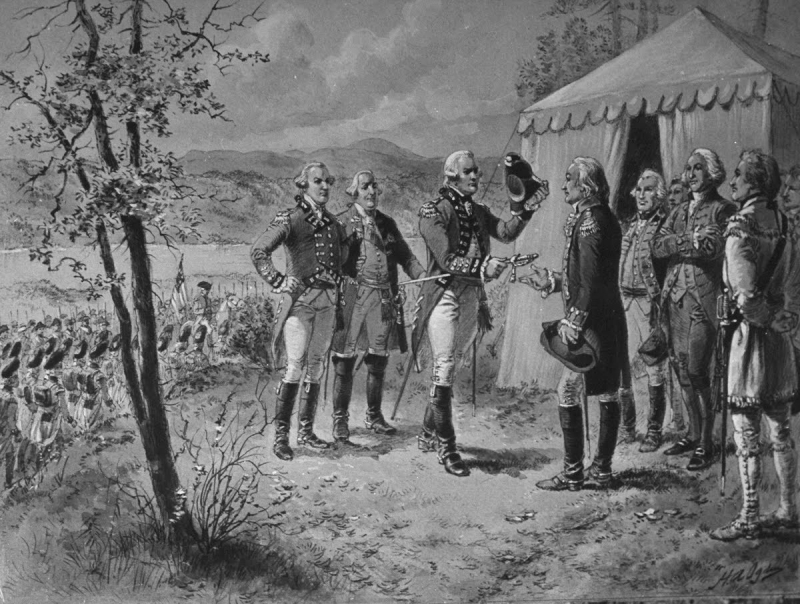
Photo: Google Arts & Culture -
On May 12, 1780, the British Army successfully forced the American Southern Army to surrender at Charleston, South Carolina after winning the Charleston battle, calling it the Charleston Victory day. Nearly 6,000 Americans were now out of the war and there was no organized army left in the south. British strategy to focus their efforts on the south was proving fruitful as they have just gained such an important victory. At that point, the British Army could proudly say that the cities of Savannah and Charleston were completely under their control.
However, problems started to appear after the victory, putting the British Army in a tough position, especially after the two leaders spread away. Leaving Lord Cornwallis in command in the south, Sir Henry Clinton sailed back to New York. Cornwallis was to reestablish the Royal government in South Carolina and move north to take control of North Carolina. Quickly, however, Cornwallis realized that although his army could win battles, they could not control the Carolinas. While few Loyalists rallied around the King’s standard, Patriot militia and guerilla forces were effective in hitting British outposts. Soon, civil war broke out across the Carolinas and Cornwallis realized that reestablishing British authority was harder than winning a stand-up battle. This was one of many times that the British Army found themself struggles in the Battle of Camden.
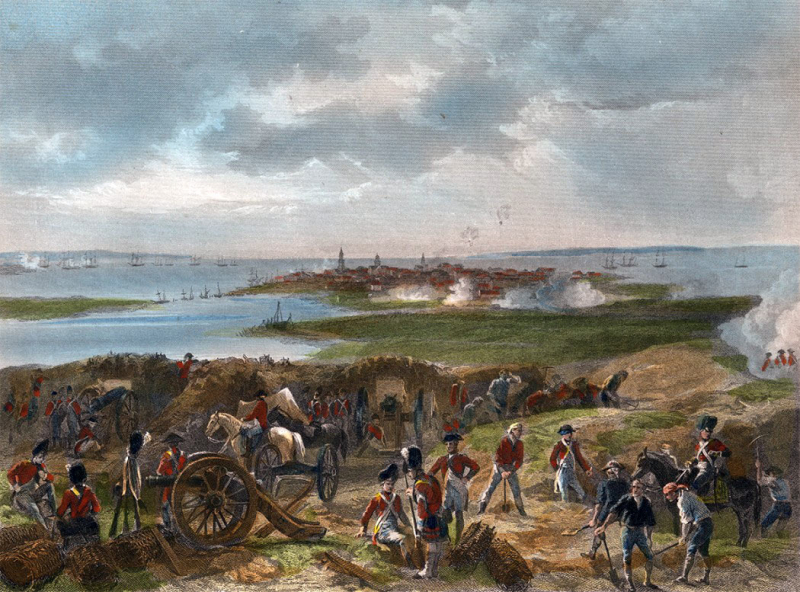
Battle of Charleston - www.britishbattles.com 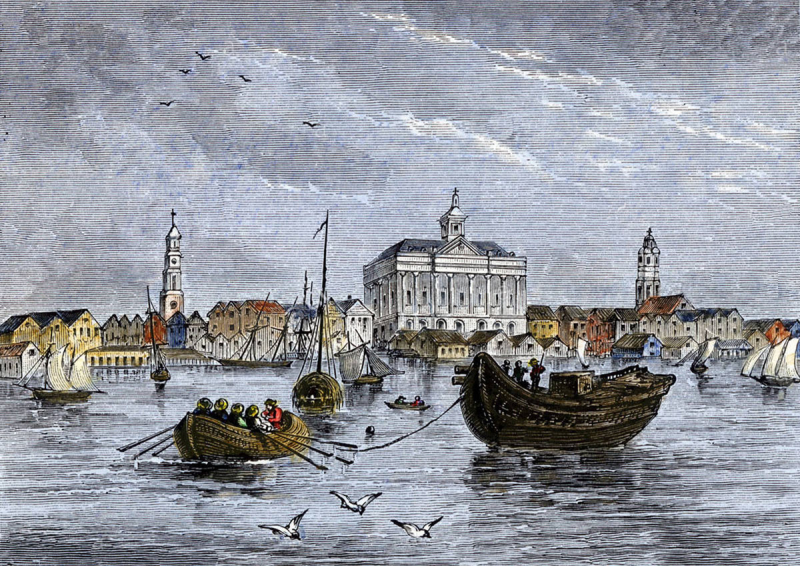
Battle of Charleston - www.britishbattles.com -
On August 15th, General Horatio Gates believed the time was right to move south from Rugeley’s Mill to start the Battle of Camden. Gates was recently reinforced by several hundred Virginia militia and had two famed Carolina partisans, Thomas Sumter and Francis Marion, moving on the flank and rear of Camden. Gates ordered his men to move out at 10 pm, hoping a night march would protect his men from the heat and humidity of the Carolina summer and possibly steal a march on the British. Gates’ plan was not to attack Camden itself but to move to a defensible position north of Camden and force the British to either attack him or abandon Camden.
On the other hand, General Lord Cornwallis was not inclined to wait for the Americans at Camden and moved northward near the same time that Gates moved south from Rugeley’s Mill. Cornwallis was an aggressive field commander and believed his best chance at victory was to prevent Gates from choosing the field or preparing his army. Additionally, Cornwallis knew he did not have enough men to fortify Camden. Colonel Otho Williams wrote later that “both armies, ignorant of each others' intentions, moved about the same hour of the same night, and approaching each other, met about halfway between their respective encampments at midnight, and started the Battle of Camden. The first revelation of this new and unexpected scene was occasioned by a smart, mutual salutation of small arms between the advanced guards.”
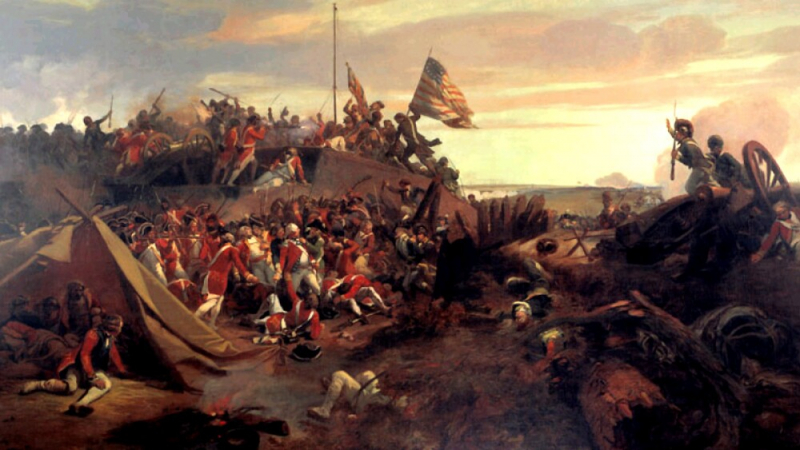
The Battle of Camden started - www.coffeeordie.com 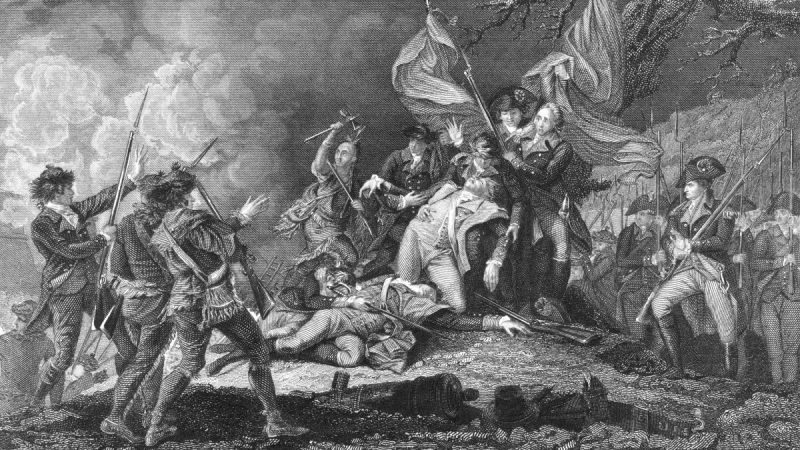
The Battle of Camden started - www.history.com -
After taking over Charleston and forcing the American Army to surrender in May 1780, British General Lord Cornwallis sought to institute the colonial civil government. The thought was, with the surrender of Charleston and the Southern American Army, Georgia, South Carolina, and soon North Carolina would all fall back in line under Royal rule. Cornwallis sought to establish outposts across South Carolina, where British military forces could enforce the rule of law, defend the Loyalist population, and defend against any Continental force coming from the north.
It became obvious that the British overestimated the amount of Loyalists in South Carolina. Only hundreds, not thousands, of Loyalists pledged their loyalty to the Crown and took up arms. Meanwhile, American partisans such as Thomas Sumter, Francis Marion, and Andrew Pickens raided the British outposts, supply lines, and Loyalist farms with impunity. Loyalist units under Banastre Tarleton, John Carden, Christian Huck, and others did their best to fight the Patriot militias, but they could not keep control of the state. A majority of the brutal fighting that occurred that summer across South Carolina were between American Patriot forces and Loyalists, not British regulars. Neighbors, friends, families, and communities were all torn apart by this civil war that occurred within the Battle of Camden.
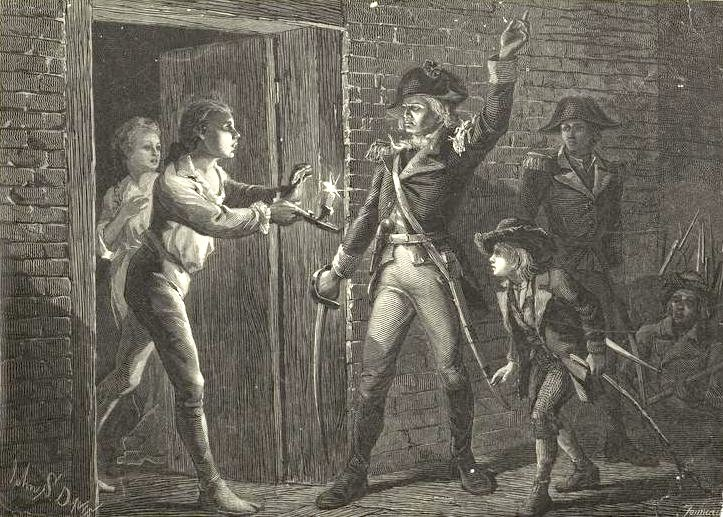
Photo: Britannica Kids 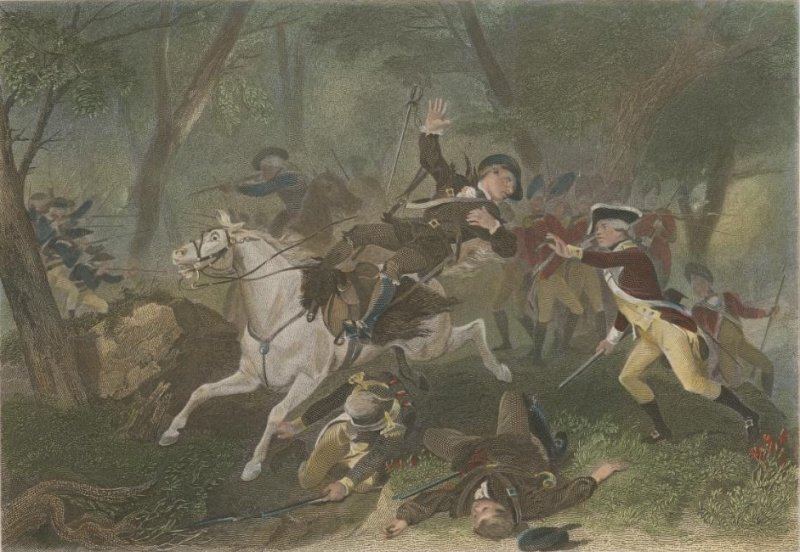
Photo: Wikipedia -
During the Battle of Camden, despite being physically stronger, and having more soldiers than the British Army, the American Army still lost. Part of the reason was the runaway of many American soldiers during the battle. However, not all of the Americans ran from the battlefield, a contingent of Continental troops fought hard to the last. General Horatio Gates’ army was made up of predominantly untrained militia from Virginia and North Carolina. However, he also had the luxury of a small force of some of the best Continental troops in the entire American army, which were Continental soldiers from Maryland and Delaware that were under the command of Major General Johann de Kalb.
With only about 1,500 in number, these men came as a relief force for the Americans at Charleston. On the morning of August 16th, de Kalb’s Continentals were on the right flank of the American line. As the militia on the left broke, the Continentals held and even pushed ahead, forcing British troops back in their front. Soon, they were nearly surrounded, and there, de Kalb was mortally wounded (suffering from three gunshot wounds and several bayonet wounds). Eventually, the remaining Continentals made their way through the swamp thicket to the west. Only 50% of the Maryland and Delaware Continental forces made it out. Their bravery and hard fighting earned them the respect of many of the British officers.
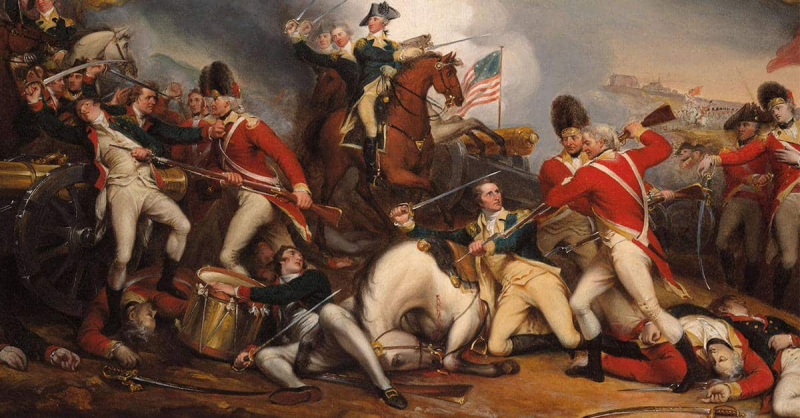
Photo: History Collection 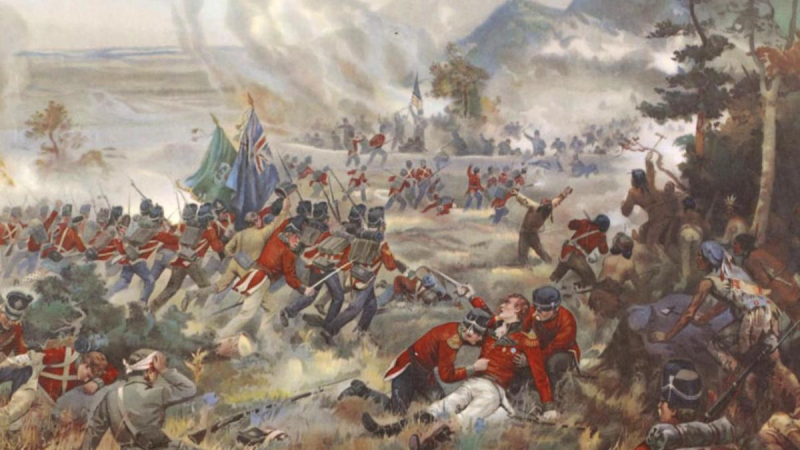
Photo: www.history.com -
History proves that the Battle of Camden was a total military disaster for the Americans Army. General Horatio Gates lost nearly 2/3 of his army and the ensuing pursuit scattered his remaining forces. With his defeat, there were no organized Continental forces left in the south. After the battle, American casualties were estimated to be 900 killed/wounded and 1,000 captured, while British casualties were estimated to be only 68 killed, 245 wounded, and 11 missing.
Therefore, the prospects for British success in the south would never be higher than in mid-August in 1780. Soon, however, General Lord Cornwallis found out how hard it would be to “tame” the Carolinas. Constant fighting in the backcountry between Loyalists and Patriot militia (bolstered by partisans such as Francis Marion, Thomas Sumter, and Andrew Pickens) kept the British from reinstituting a Royal government. British frustrations guided strategic decisions that led to defeats at Kings Mountain and Cowpens a few months later. The battles at Kings Mountain and Cowpens were a complete victory for the Patriot force. British losses were staggering: 110 dead, over 200 wounded and 500 captured. The American victory devastated Loyalist support in the south and stalled Cornwallis. It was the first of a series of setbacks that ended in the eventual collapse of the British effort to hold North America.
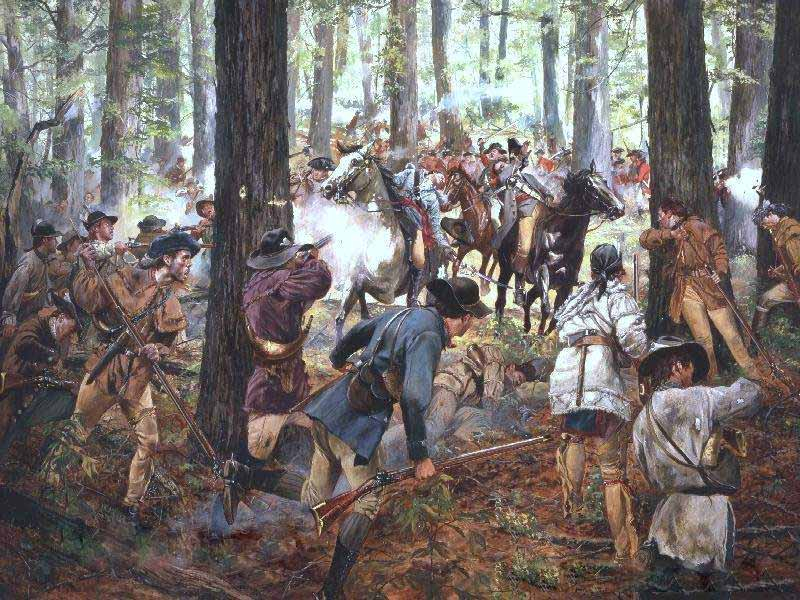
Loyalists and Patriots fighting in the Battle of Camden - American Revolutionary War 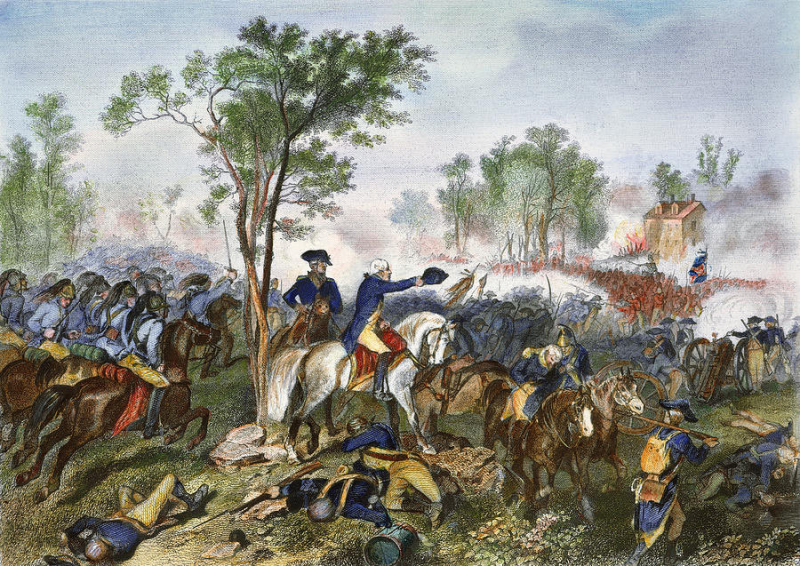
Photo: British Battles -
The Camden Battlefield is the site of the Battle of Camden. The battlefield sprawls over an area estimated to be 2,000 acres (8.1 km2) about 6 miles (9.7 km) north of Camden, South Carolina, bounded on the north by Lake Shamokin, and extending south. Flat Rock Rd passes roughly through the center of the battlefield, and United States Route 521 marks its eastern boundary. Approximately 479 acres of the core of the battlefield are now owned by the Palmetto Conservation Foundation. The original five acres were owned by the Hobkirk Chapter of the Daughters of the American Revolution who gave their portion over to the current owners. The site was declared a National Historic Landmark in 1961, and placed on the National Register of Historic Places in 1966.
The Camden battlefield is under significant threat from destructive large-scale commercial timbering which has been going on for several years in the area. Despite undergoing preservation in private-public partnerships, especially under the hand of the Palmetto Conservation Foundation, the historic site once was the battlefield is also still under pressure from encroaching residential development. Camden, South Carolina area is fast becoming a bedroom community for Columbia, the state capital, just 30 miles away. You can visit this historic site today to see what is left with times of an area that used to be a battlefield of the battle of Camden.
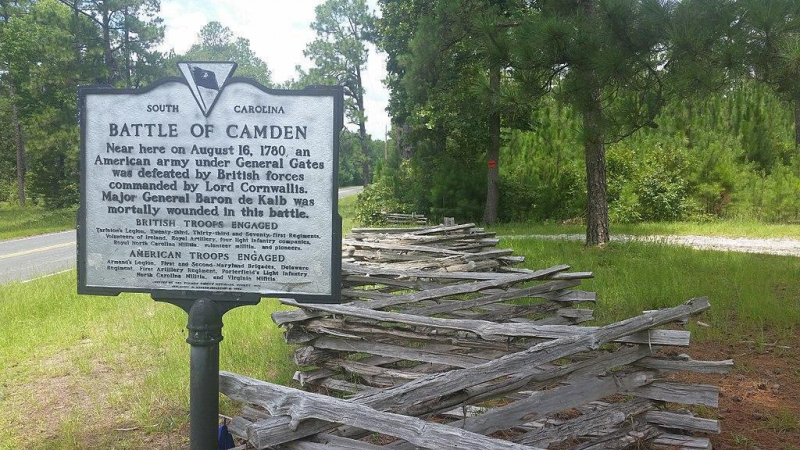
Photo: Great Southern Homes Video: News 19 WLTX -
The Patriot is a 2000 American epic historical war film written by Robert Rodat, directed by Roland Emmerich, and starring Mel Gibson, Chris Cooper, Heath Ledger, and Jason Isaacs. The story takes place mainly in rural Berkeley County in South Carolina and depicts Benjamin Martin (Gibson), an American colonist opposed to going to war with Great Britain who, along with his adult son, (Ledger) gets swept into the Revolutionary War when his home life is disrupted and one of his sons is murdered by a cruel British officer (Isaacs).
Aspects of the Battle of Camden were included in the movie. In The Patriot, Ben comments on the stupidity of Gates fighting "muzzle to muzzle with Redcoats". The film is not historically accurate, depicting too many Continental troops relative to the number of militia, and showing the Continentals and militia retreating at the same time. On Rotten Tomatoes, the film holds an approval rating of 62% based on 137 reviews, with an average rating of 6.10/10. The site's critic's consensus reads: "The Patriot can be entertaining to watch, but it relies too much on formula and melodrama." The film was harshly criticized in the British press in part because of its connection to Francis Marion, a militia leader in South Carolina known as the "Swamp Fox". Despite having different critics, the film is still entertaining and helpful for those who want to study about the Battle of Camden, as well as American History.
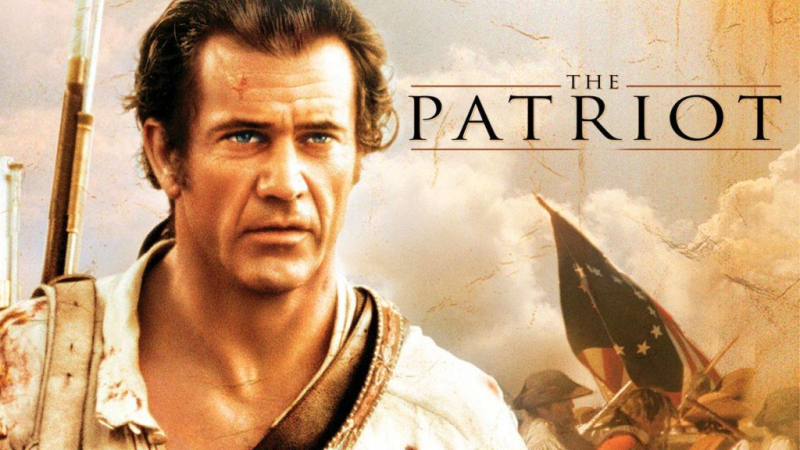
The Patriot movie's poster - Deem-It Directory Video: Classic Movie Trailers














